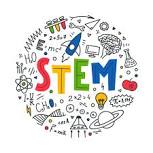
STEM education integrates science, technology, engineering, and mathematics into a cohesive learning approach, emphasizing real-world problem-solving and interdisciplinary connections. It aims to equip students with critical thinking, analytical, and problem-solving skills, preparing them for future careers and fostering innovation. STEM teaching methods often involve hands-on, project-based, and inquiry-based learning, encouraging active student engagement and application of knowledge.
Each student attends STEM as one of their rotations.
